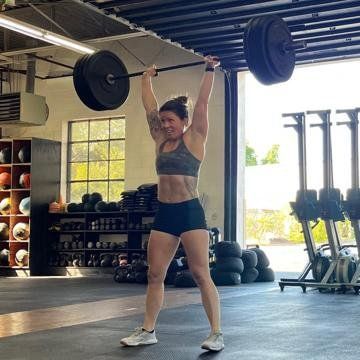How Targeted Nutrition Accelerates Healing After Injury
As physical health specialists in Newington, CT, we understand that proper nutrition plays a critical role in recovery from injury. Thoughtful food choices can significantly influence healing time, tissue repair, and inflammation control.
In this comprehensive guide, we'll share evidence-based nutrition strategies that can help accelerate your healing process and get you back to your normal activities faster.
The Science Behind Nutrition and Tissue Repair
When your body suffers an injury, it immediately begins a complex healing process that requires specific nutrients to function optimally. Without these essential building blocks, recovery can be delayed or compromised.
According to research published in the Journal of the International Society of Sports Nutrition, proper nutritional support can reduce recovery time by up to 25% in certain injuries. This significant improvement demonstrates how powerful dietary choices can be in supporting the body's natural healing mechanisms.
Key Recovery Phases and Nutritional Needs
The healing process typically unfolds in three distinct phases, each with specific nutritional requirements:
Inflammatory Phase (0-5 days)
During this initial period, your body increases blood flow to the injured area and begins clearing damaged tissue. Nutritional priorities include:
- Adequate protein to support cellular repair
- Antioxidants to manage oxidative stress
- Anti-inflammatory compounds to modulate the inflammatory response
Proliferative Phase (5-14 days)
In this second phase, your body begins building new tissue at the injury site. Key nutritional needs include:
- Higher protein intake to provide raw materials for tissue construction
- Sufficient calories to fuel the energy-intensive rebuilding process
- Vitamin C, zinc, and other micronutrients essential for collagen formation
Remodeling Phase (14 days - 1+ years)
The final phase involves restructuring and strengthening the repaired tissue. Nutritional support should focus on:
- Continued protein adequacy for tissue maturation
- Balanced mineral intake for optimal tissue function
- Essential fatty acids to support cell membrane integrity
Essential Nutrients That Accelerate Healing
Research consistently shows that certain nutrients play particularly important roles in recovery. Let's examine these key components and how they support healing.
Protein: The Foundation of Tissue Repair
Protein provides the amino acid building blocks necessary for creating new tissue and repairing damaged structures.
How Much Protein Do You Need?
For individuals recovering from injury, research suggests:
- General recommendation: 1.6-2.0 grams of protein per kilogram of body weight daily
- For significant injuries: Up to 2.5 grams per kilogram may be beneficial
- Timing matters: Distributing protein intake evenly throughout the day (20-30g per meal) optimizes tissue synthesis
Dr. Stuart Phillips, a leading protein researcher, notes that "inadequate protein intake can delay recovery by limiting the raw materials needed for tissue repair." This underscores why paying attention to protein consumption is so crucial during recovery.
Quality Protein Sources
The most effective protein sources for healing include:
- Lean meats (chicken, turkey, lean beef)
- Fish and seafood
- Eggs
- Dairy products (Greek yogurt, cottage cheese)
- Plant-based options (legumes, tofu, tempeh, quinoa)
Anti-Inflammatory Nutrients to Control Healing Response
While inflammation is a necessary part of healing, excessive or prolonged inflammation can impede recovery. Certain nutrients help regulate this response.
Omega-3 Fatty Acids
These essential fats help moderate inflammation and support cellular health:
- Recommended intake: 2-4 grams of combined EPA and DHA daily
- Food sources: Fatty fish (salmon, mackerel, sardines), walnuts, flaxseeds, chia seeds
- Consideration: Higher intakes may be beneficial during acute injury phases
Research published in the American Journal of Clinical Nutrition found that omega-3 supplementation reduced inflammatory markers by up to 33% in individuals with musculoskeletal injuries.
Antioxidant-Rich Foods
Colorful fruits and vegetables provide antioxidants that help manage oxidative stress during healing:
- Berries (blueberries, strawberries, blackberries)
- Dark leafy greens (spinach, kale, collards)
- Orange/yellow produce (sweet potatoes, bell peppers, mangoes)
- Red/purple options (cherries, pomegranates, beets)
Studies show that individuals with higher intakes of these foods experience faster resolution of inflammatory markers and quicker return to function.
Creating a Healing-Focused Nutrition Plan
Understanding these principles allows you to develop a structured approach to nutritional support during recovery.
Caloric Considerations During Healing
Many people mistakenly reduce calories while injured due to decreased activity, but healing is an energy-intensive process.
Energy Needs During Recovery
Research indicates:
- Basal metabolic rate can increase 15-50% following significant injury
- Minor injuries may require 10-15% more calories than maintenance needs
- Severe injuries can demand up to 50% more calories in some cases
Dr. Donald Layman, protein metabolism expert, explains that "providing adequate energy is crucial; otherwise, protein may be diverted away from healing to meet basic energy needs."
Practical Meal Planning for Optimal Recovery
Translating these principles into practical eating patterns is essential for implementation.
Sample Daily Healing Nutrition Framework
A basic structure might include:
- Breakfast: Protein-rich options (eggs, Greek yogurt) with antioxidant-rich fruits and whole grains
- Lunch: Lean protein with abundance of colorful vegetables and healthy fats
- Dinner: Quality protein source with complex carbohydrates and anti-inflammatory components
- Snacks: Nutrient-dense options like nuts, fruits, protein smoothies, or yogurt
This framework ensures consistent nutrient delivery throughout the day to support continuous healing.
Hydration's Critical Role in Tissue Healing
Proper fluid balance is often overlooked but critical for optimal recovery.
Water as a Recovery Tool
Adequate hydration:
- Facilitates nutrient transport to healing tissues
- Supports waste removal from damaged areas
- Maintains proper blood volume for efficient circulation
- Enables optimal cellular function in repairing tissues
Research from the Journal of Athletic Training shows that even mild dehydration (2% body weight) can impair tissue healing by up to 20%.
Hydration Guidelines During Recovery
For most individuals recovering from injury:
- Minimum intake: 3-4 liters (12-16 cups) of fluid daily
- Urine color: Aim for pale yellow as an indicator of adequate hydration
- Electrolyte balance: Important for optimal fluid utilization, especially with increased sweating or fever
Nutrition Strategies for Common Injury Types
Different injuries may benefit from specific nutritional approaches based on the tissues involved.
Bone Healing Support
For fractures and stress reactions:
- Calcium: 1000-1200mg daily from dairy, fortified plant milks, leafy greens
- Vitamin D: 1000-2000 IU daily (sunlight exposure plus dietary sources)
- Vitamin K: Abundant in dark leafy greens, supports calcium utilization
- Silicon: Found in whole grains, root vegetables, and certain mineral waters
Research in the Journal of Bone and Mineral Research demonstrates that proper nutrient support can accelerate fracture healing by 15-20%.
Soft Tissue Recovery Nutrition
For muscle, tendon, and ligament injuries:
- Collagen-supporting nutrients: Vitamin C, copper, zinc, glycine-rich foods
- Branched-chain amino acids: Particularly important for muscle tissue repair
- Anti-inflammatory compounds: Curcumin, ginger, and omega-3s may be especially beneficial
Implementing Your Healing Nutrition Plan in Newington
Here in Newington, CT, we understand the challenges of maintaining optimal nutrition while recovering from injury. The good news is that our community offers excellent resources for supporting your healing dietary needs.
Local Newington farmers' markets, grocery stores, and health food shops provide access to the fresh, nutrient-dense foods that can accelerate your recovery. Planning ahead and preparing simple, nutrient-rich meals can make a significant difference in your healing timeline.
If you're struggling with implementing a healing-focused nutrition plan, it's worth seeking guidance from a qualified nutrition professional who can help you develop strategies tailored to your specific injury and lifestyle in Newington.
The Connection Between Nutrition and Physical Recovery
At Rebound Performance Physical Therapy in Newington, we understand that a comprehensive approach to healing includes both appropriate physical interventions and proper nutritional support. While we focus primarily on movement, we recognize the powerful synergy between nutrition and physical recovery.
When proper nutrition strategies are combined with appropriate physical approaches, the results are often greater than either intervention alone. This integrated perspective allows for truly optimal healing outcomes.
Putting Knowledge Into Action
Armed with these evidence-based nutrition strategies, you're now better equipped to support your body's natural healing processes. Remember that consistency is key—the daily choices you make have a cumulative effect on your recovery timeline.
Start by implementing one or two strategies from this article, then gradually incorporate more as they become routine. Small, consistent changes often lead to the most sustainable improvements in nutritional habits and healing outcomes.
If you have questions about how nutrition can support your specific injury recovery or would like to learn more about comprehensive rehabilitation approaches in Newington, we invite you to contact us at
(203) 601-7446 for more information.
Recent Blog Post












